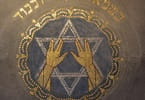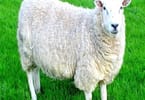TASHKENT: Nowruz, which means New Day, is being celebrated all over Central and South Asia on March 20-21. Nowruz is the name of Persian New Year in Iranian calendars and the corresponding traditional celebrations continue for 13 days. A large number of tourists visit Central Asian states, particularly Uzbekistan, to enjoy and observe this event.
The history of Nowruz stretches back more than 2,600 years to the time of Zoroaster and the ancient Persian kings. While initially a religious festival, Nowruz is now mostly secular, though it is steeped in symbolism and rich traditions.
March begins with spring cleaning. Families plant small pots of wheat, barley, or lentils that quickly germinate into lush green sprouts. Visits to family and friends are an obligation.
Red Wednesday
At sundown on the last Wednesday before the New Year, bonfires are lit for Chaharshanbe Suri, or Red Wednesday. Revelers jump over the fires to cleanse themselves of fear and weakness. Children dress up in disguises to represent ancestors, and knock on doors for treats in a ritual similar to Halloween.
The Haft Sin
The centerpiece of Nowruz observances is the Haft Sin, a tablesetting of seven symbolic foods all starting with the letter “S.” These often include wheat, barley, or lentil sprouts (sabzeh), a wheat pudding (samanu), dried oleaster berries (senjed), garlic (sīr), apples (sīb), sumac berries (somaq), and vinegar (serkeh). The table also includes other items like candles, mirrors, colored eggs, and even goldfish bowls with live fish.
Nowruz Foods
All kinds of sweets, pastries, nuts, and sherbets are eaten in large amounts during Nowruz. Some of the more popular Nowruz dishes include:
• Sabzi Polo ba Mahi — rice tinted vivid green with herbs and served with fried fish. Served on New Year’s day;
• Kookoo Sabzi — an herbed omelet;
• Reshteh Polo — chunks of lamb with rice and noodles;
• Dolmeh Barg — grape leaves stuffed with a mixture of rice and ground lamb; and
• Shekar Polo — a sweet rice pilaf.
The final day of Nowruz is a time for families to drive to the countryside for day-long picnics. People revel in the fresh and warming air, because the next day, it’s back to work.
Since the Achaemenid era, the official year has begun with the New Day when the sun leaves the zodiac of Pisces and enters the zodiacal sign of Aries, signifying the Spring Equinox. Nowruz is also a holy day for Sufis, Ismailis, Alawites Alevis, Babis, and adherents of the Baha’a faith.
The term Nowruz in writing first appeared in Persian records in the 2nd century AD, but it was also an important day during the time of the Achaemenids (c. 548-330 BC), where kings from different nations under the Persian empire used to bring gifts to the Emperor, also called King of Kings (Shahanshah), of Persia on Nowruz. The significance of Nowruz in the Achaemenid empire was such that the great Persian king Cambyses II’s appointment as the king of Babylon was legitimized only after his participation in the New Year festival (Nowruz).
The UN’s General Assembly in 2010 recognized the International Day of Nowruz, describing it as a spring festival of Persian origin which has been celebrated for over 3,000 years. During the meeting of the Inter-governmental Committee for the Safeguarding of the Intangible Heritage of the United Nations, held between September 28–October 2, 2009 in Abu Dhabi, Nowruz was officially registered on the UNESCO list of Intangible Cultural Heritage of Humanity.
www.dnd.com.pk






















